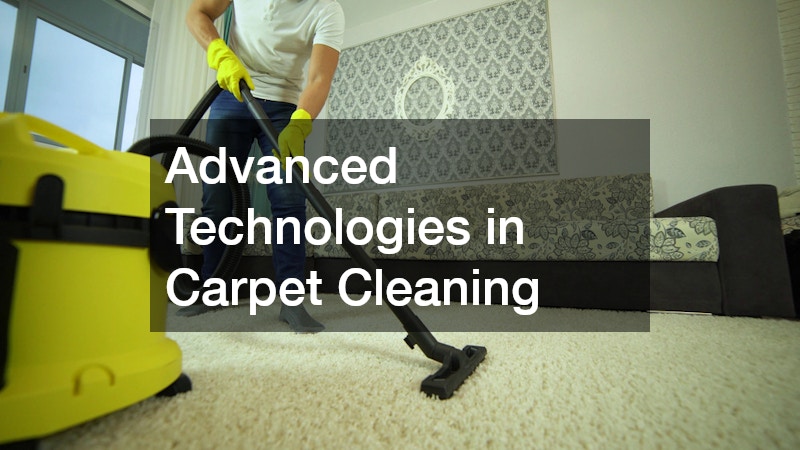The Science Behind How Carpet Cleaners Remove Tough Stains
Whether it’s a red wine spill, muddy footprints or a pet accident, tough stains on carpets are a universal headache for homeowners. While some stains may seem impossible to remove, modern carpet cleaners utilise advanced scientific principles and technologies to lift even the most stubborn spots. From chemical reactions to mechanical agitation and heat application, the science behind stain removal is more sophisticated than many realise.
Understanding the Nature of Stains
Before diving into how rug cleaners work, it’s important to understand what makes stains so stubborn. A stain forms when a substance binds to carpet fibres either physically or chemically. The composition of the staining material—whether it’s protein-based like blood or dairy, tannin-based like coffee or tea or oil-based like grease—determines the removal method. Some stains penetrate deeply into the fibres, while others sit on the surface, making the cleaning approach critical.
Stains are also affected by the carpet’s material. Natural fibres like wool are more absorbent and delicate, requiring gentler methods, while synthetic fibres like nylon or polyester are more resistant but can retain odours and discolouration.
Chemistry at Work
One of the most crucial elements of professional carpet cleaning is chemistry. They use specially formulated solutions that react with specific types of stains. Enzyme-based cleaners, for instance, are highly effective on organic stains such as food, urine or blood. These enzymes break down proteins into smaller, more easily removed molecules.
Oxidising agents like hydrogen peroxide or oxygen bleach are also common. They work by breaking the molecular bonds of coloured compounds in the stain, essentially decolourising them without damaging the carpet fibres. For oil-based stains, solvents and surfactants come into play, breaking up the grease so it can be rinsed away.
The pH of a cleaning solution is also key. Acidic cleaners (pH under 7) are effective for mineral stains like rust, while alkaline cleaners (pH above 7) are better suited for organic and greasy messes. Rug cleaners must carefully select and balance these chemical agents to ensure safe and effective treatment.
Heat & Moisture
Heat is another scientifically proven tool in the arsenal of rug cleaners. Hot water extraction—commonly referred to as steam cleaning—is one of the most widely used methods in professional carpet cleaning. The process involves injecting hot water mixed with detergent into the carpet fibres, then immediately extracting it along with the loosened dirt and stains.
The elevated temperature enhances the effectiveness of cleaning agents by increasing the speed of chemical reactions and reducing the surface tension of water, allowing it to penetrate carpet fibres more effectively. However, excessive heat can damage delicate fibres, so professional carpet cleaners adjust temperatures depending on the carpet type and stain.
Moisture plays a dual role: it helps dissolve water-soluble stains and carries cleaning agents into the fibres, but too much moisture can lead to mildew or shrinkage. That’s why precise moisture control and efficient extraction are vital in professional cleaning.
Mechanical Action & Agitation
Chemical reactions alone aren’t always sufficient. Mechanical action—scrubbing, brushing or agitation—helps dislodge particles embedded in the carpet pile. Many carpet cleaning experts incorporate rotating brushes or counter-rotating brush systems that lift the fibres and release dirt without damaging the fabric.
Agitation improves the distribution of cleaning solutions, enhances penetration and accelerates stain removal. This physical element is especially useful for high-traffic areas where grime has been compacted into the fibres over time.
Time: The Final Factor
In stain removal, time is a key variable. The longer a stain sits, the more it bonds with the carpet fibres, making it harder to remove. Conversely, the dwell time of a cleaning solution—the period it remains on the stain before extraction—is critical. Too short, and the chemicals don’t have enough time to react. Too long and you risk fibre damage or re-soiling.
Professional cleaners understand these timing nuances and apply them with precision, often testing in inconspicuous areas to determine optimal dwell time.
Advanced Technologies in Carpet Cleaning

Technology is rapidly evolving in the cleaning industry. Today’s carpet cleaning experts often use machines equipped with sensors, adjustable pressure systems and eco-friendly formulations that reduce water and chemical use without compromising results.
Some commercial-grade cleaners even incorporate ultraviolet light to sanitise carpets, while others use encapsulation technology. This process involves applying a polymer-based cleaner that crystallises dirt and residues as it dries, making it easy to vacuum away.
The ability of carpet cleaners to remove tough stains isn’t just about scrubbing harder or using stronger chemicals—it’s about applying the right scientific principles. From understanding the chemistry of stains and cleaning agents to harnessing the power of heat, moisture and mechanical action, modern carpet cleaning is a fusion of art and science. With the right tools and knowledge, even the most stubborn stains don’t stand a chance.


